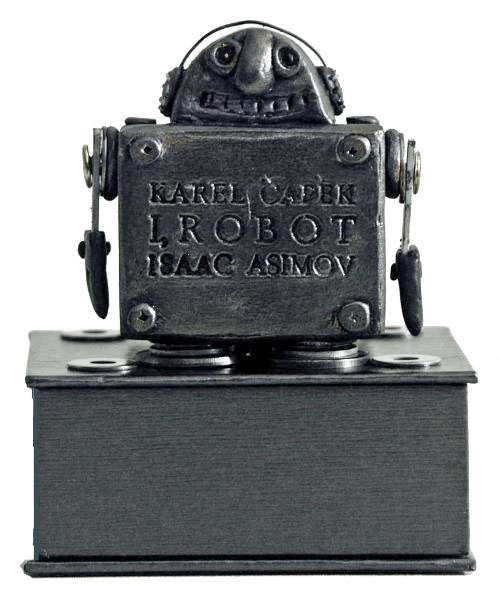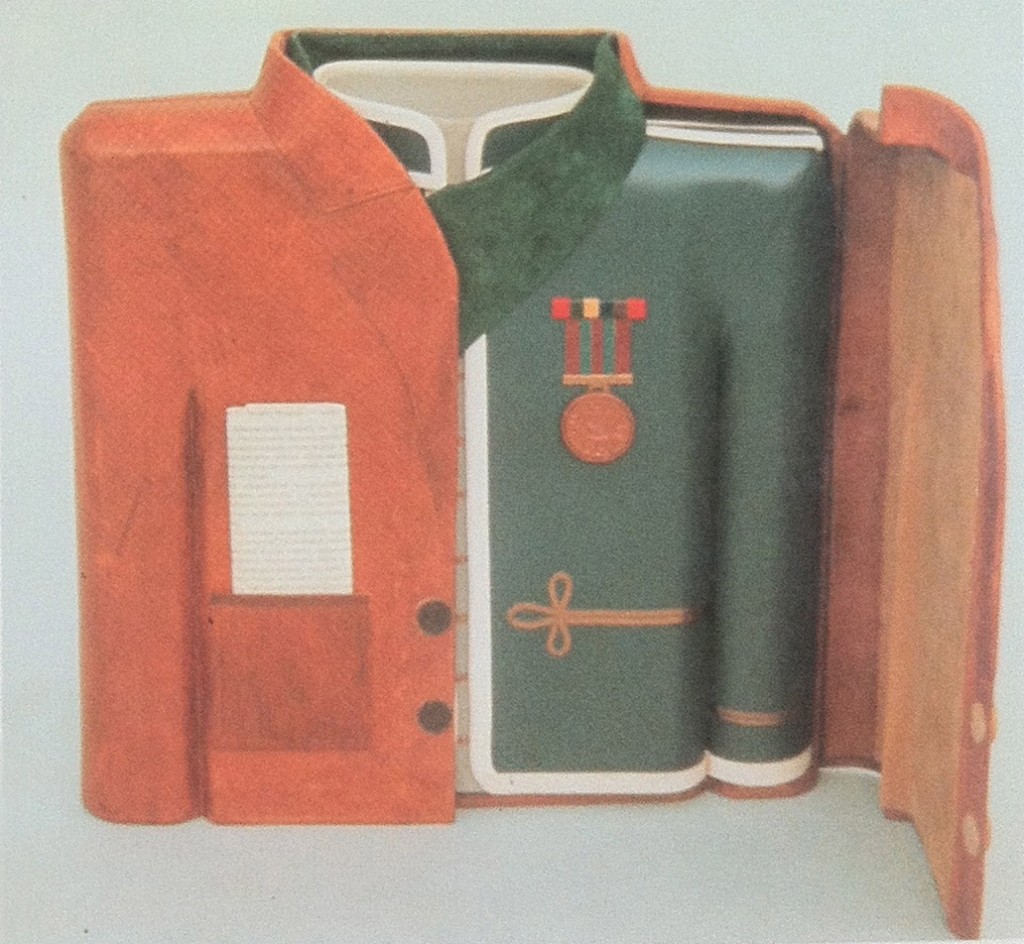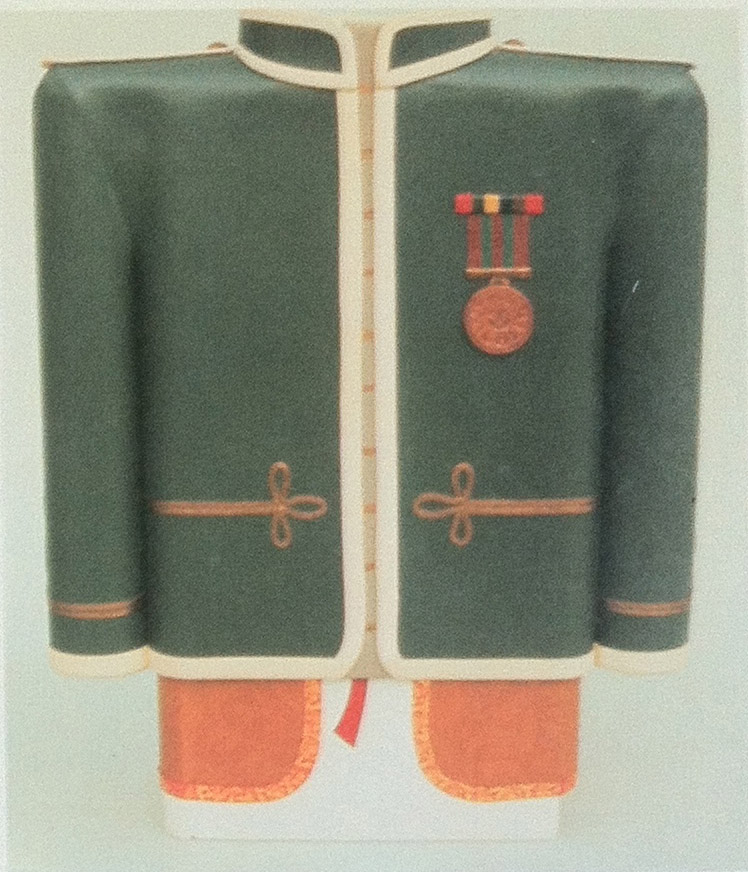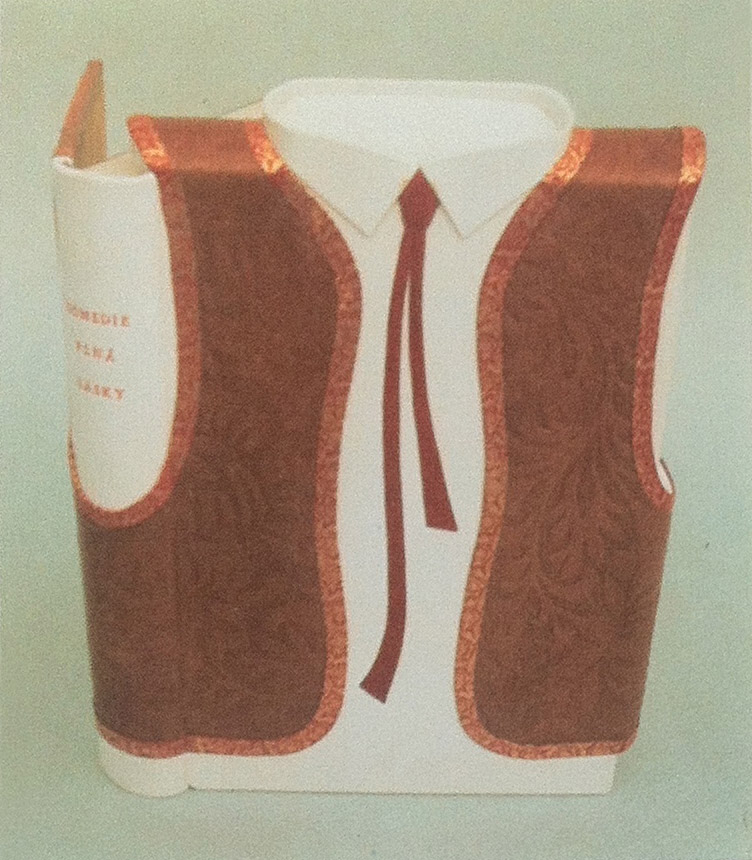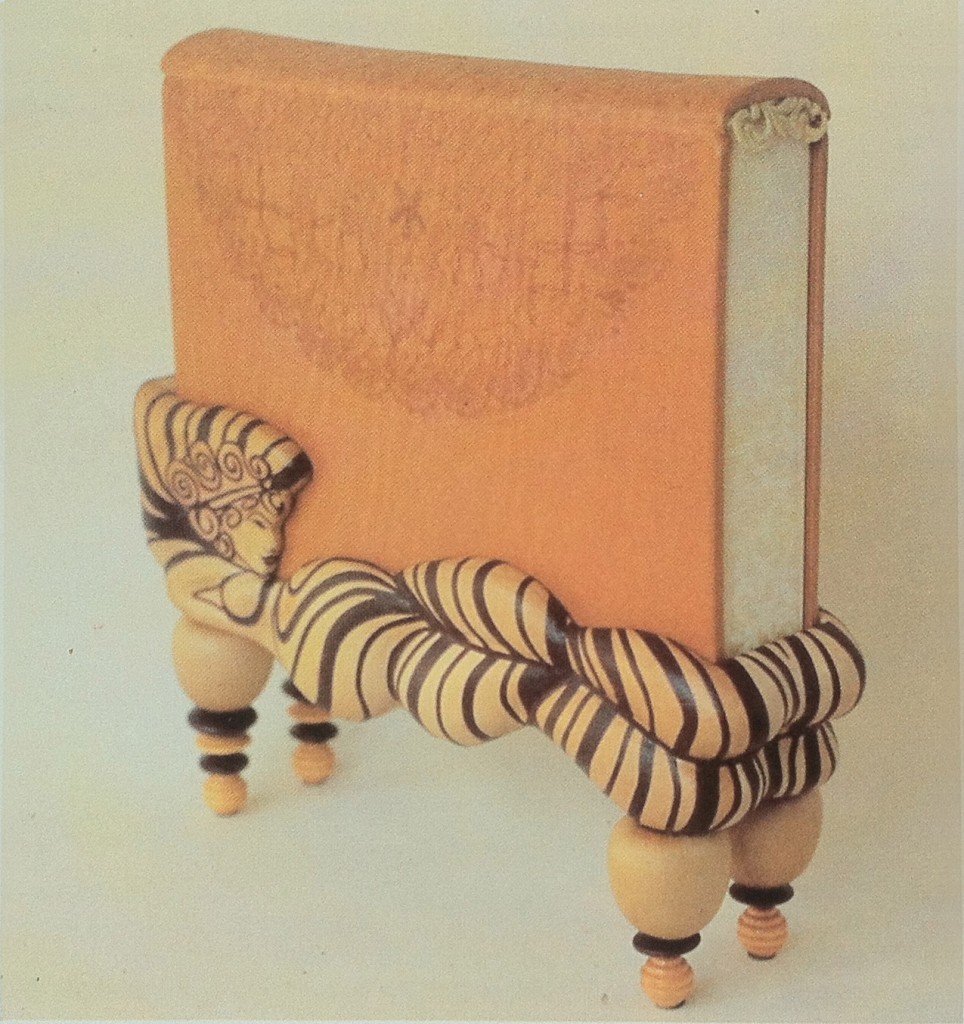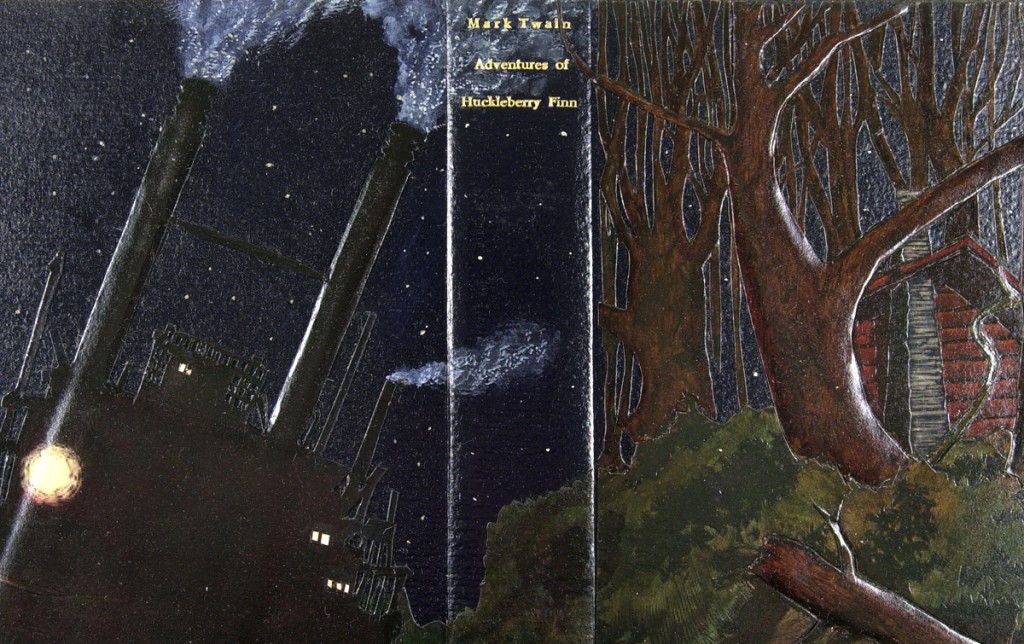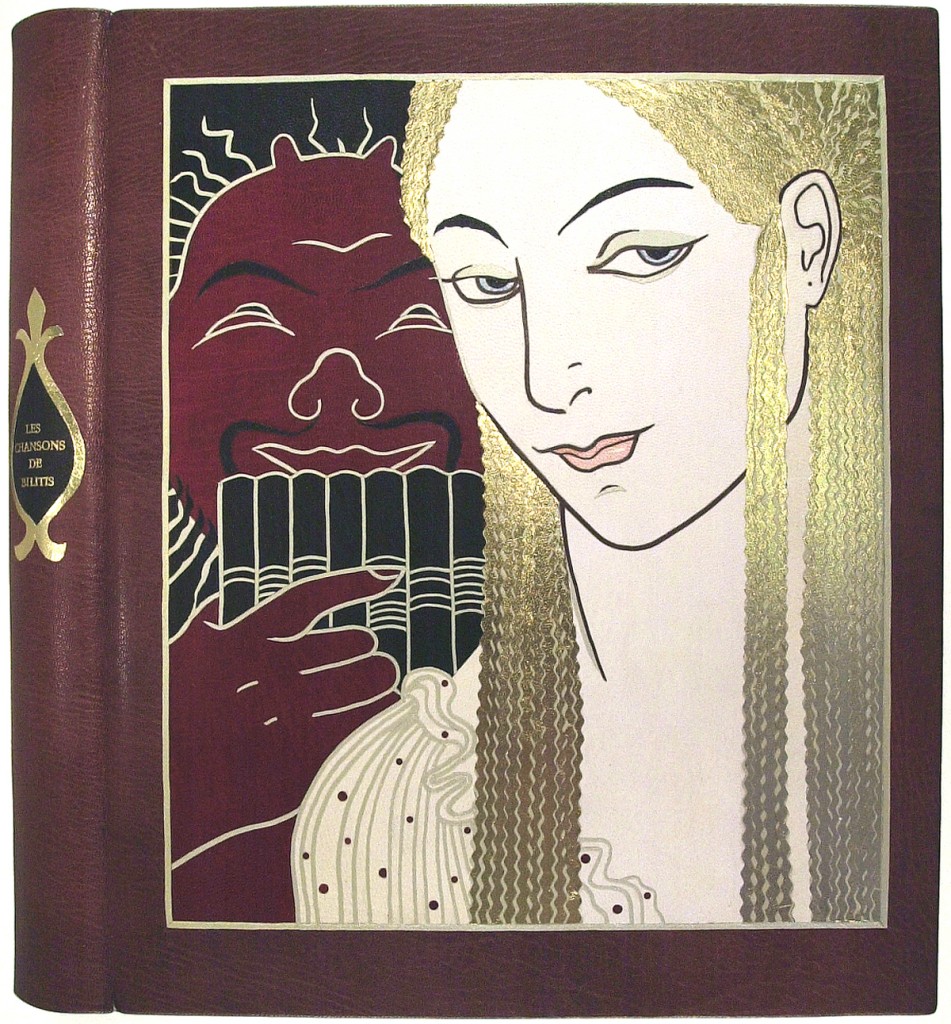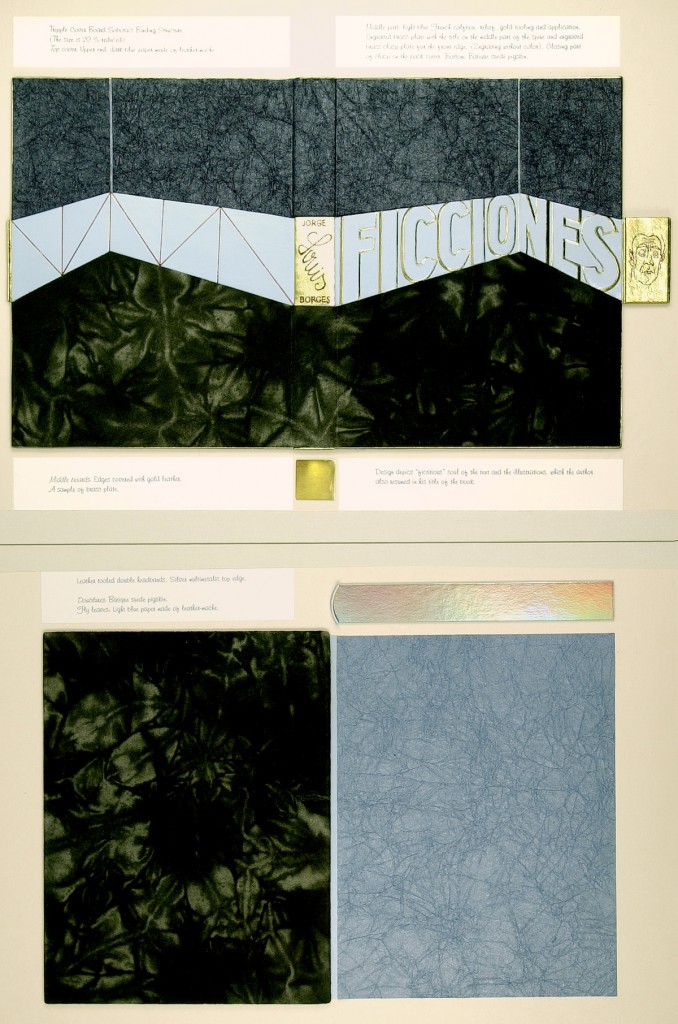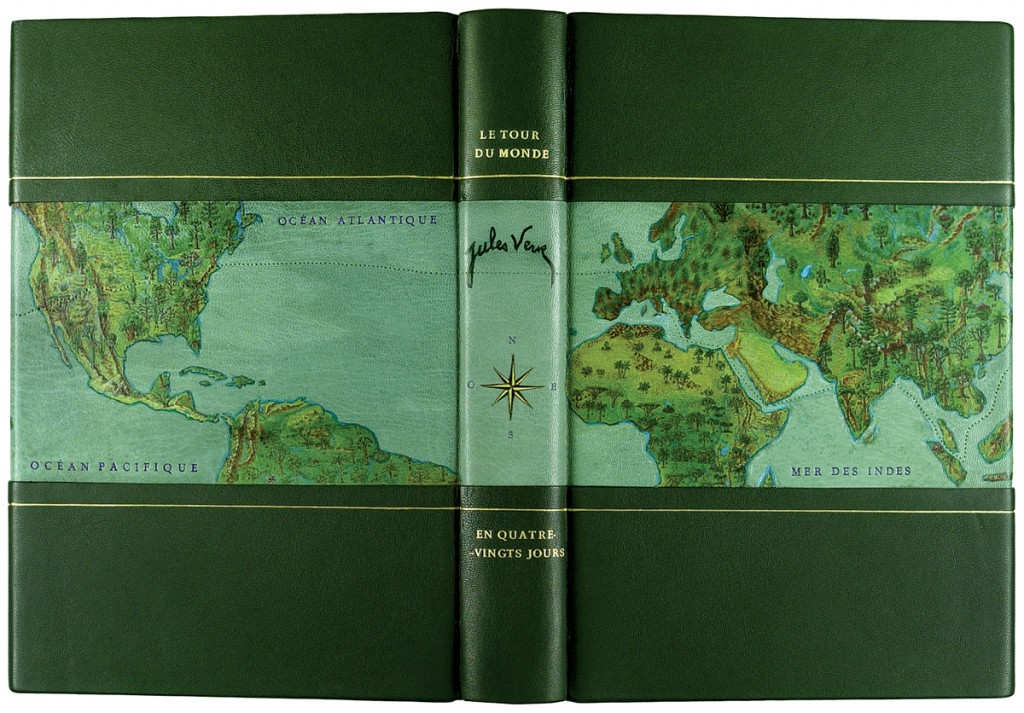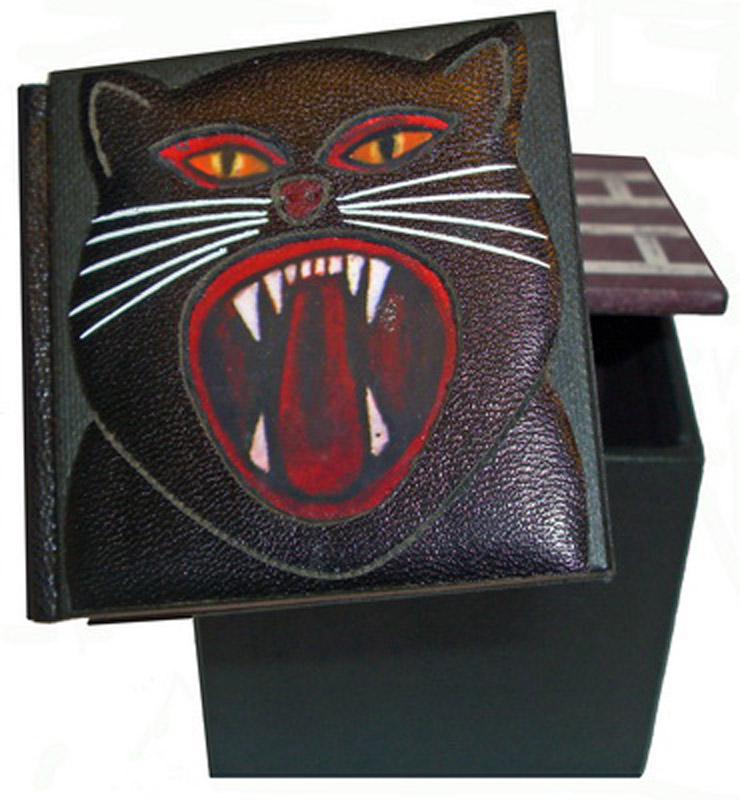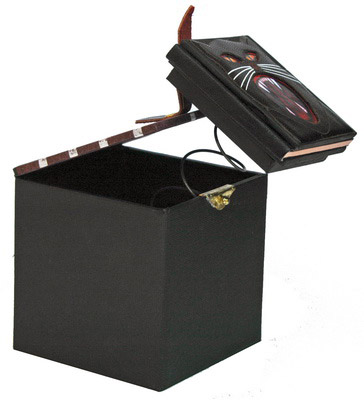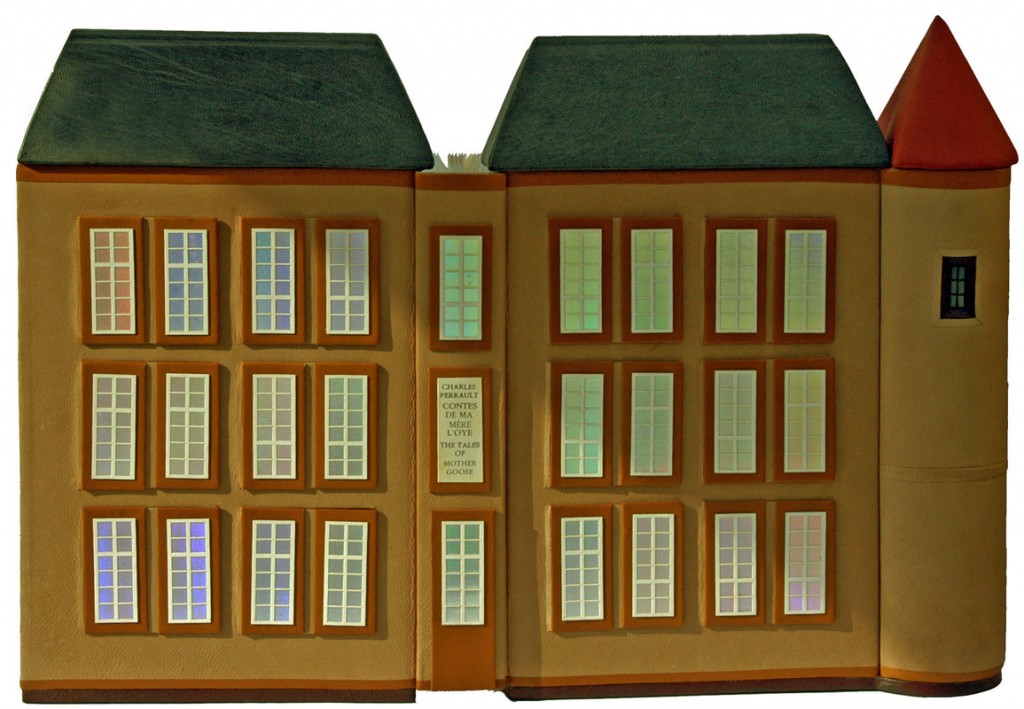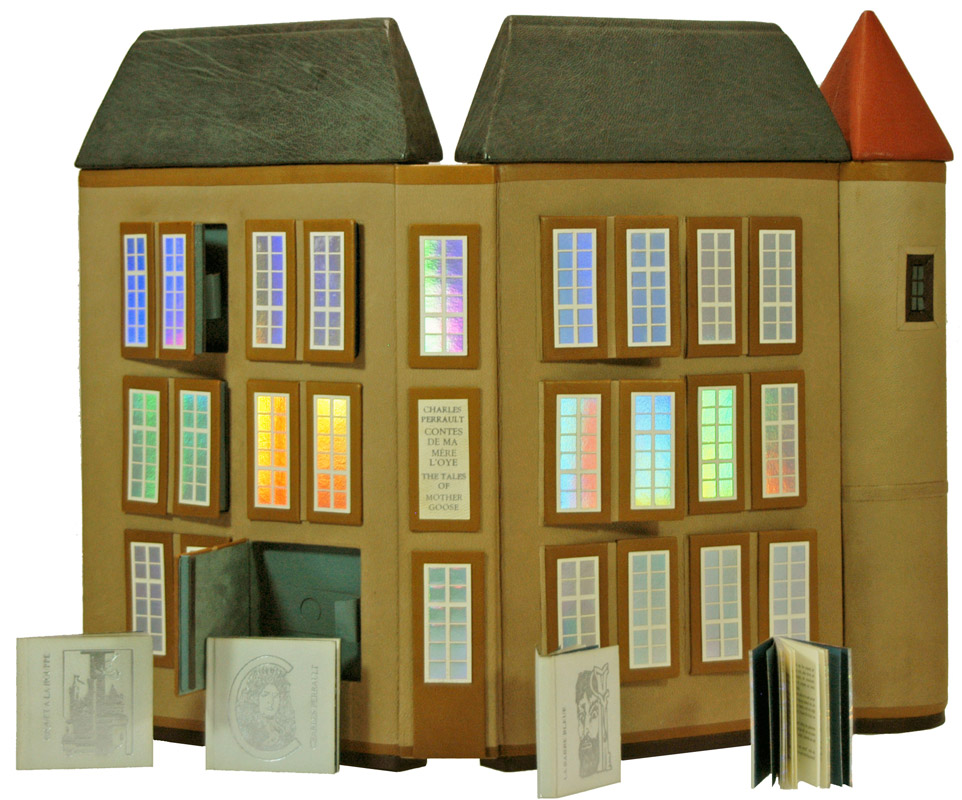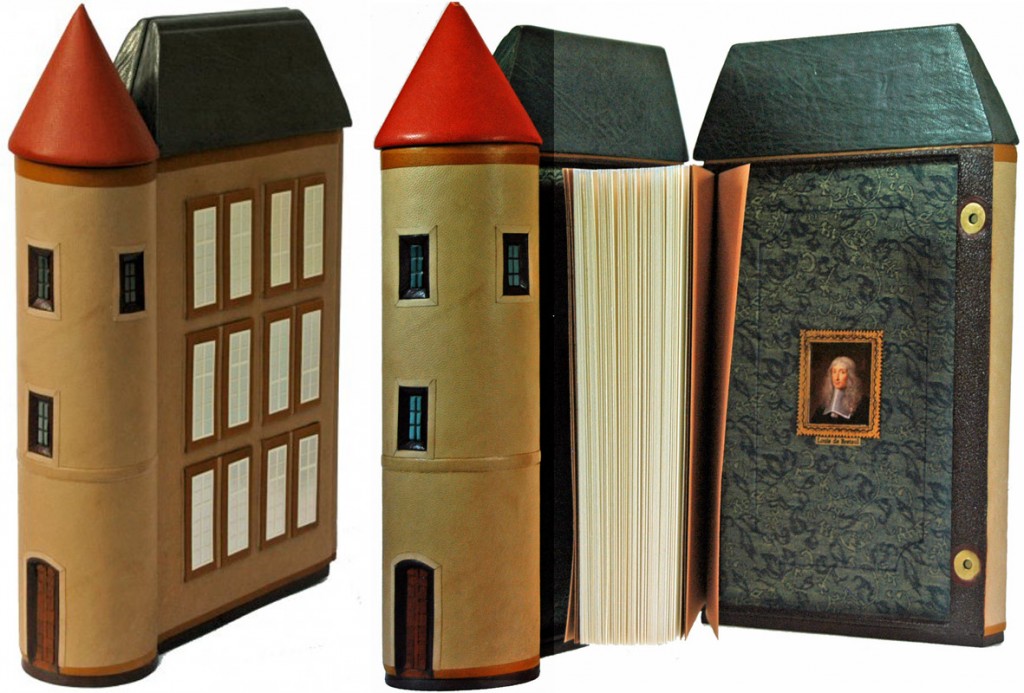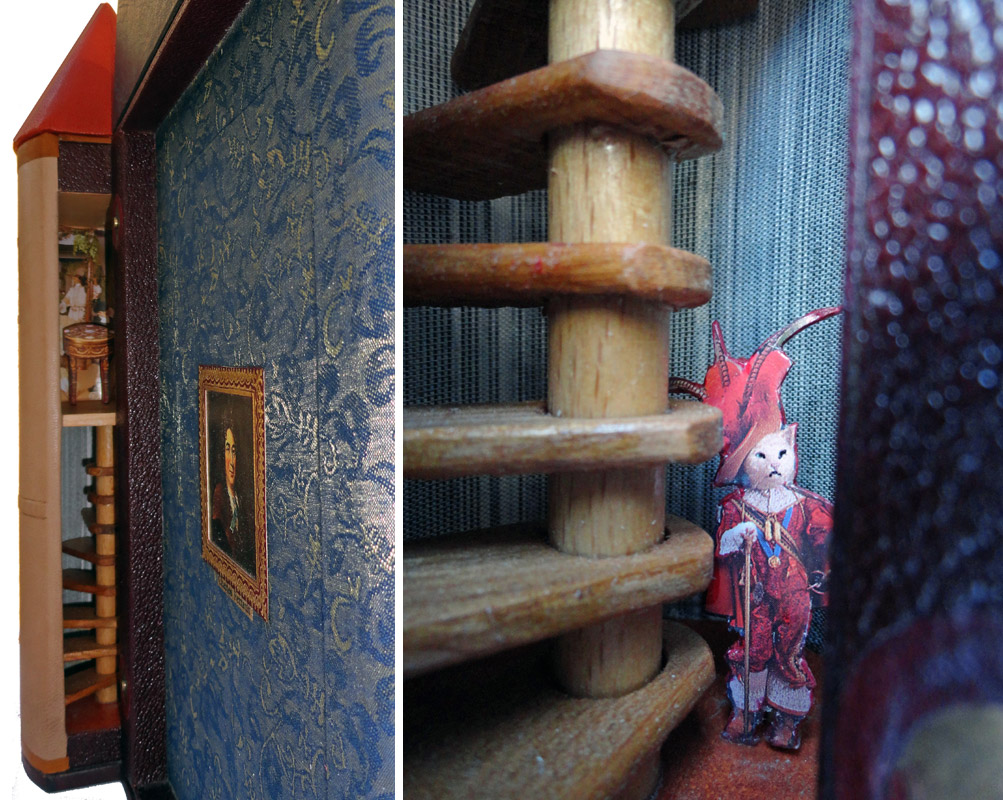I’m finishing off this month of Jan Sobota bindings with another miniature book that was created in collaboration with his wife Jarmila. Inside the hand-sculpted robot lives an accordion book of sixteen panels. The text explores the birth and usage of the word “robot”, which is first used by the Czech playwright Karel Čapek in 1920 (the word “robot” derives from a Czech word meaning forced labor or serf). The term “robotics” was coined by the Russian writer Isaac Asimov.
The accordion-fold panels fold ingeniously into a compartment in the back the 2 3/4″ tall metal robot. A metal panel is held in place with a magnet affixed to the back of the robot’s head, securing the pages inside the robot. The robot is made with the use of A+B EpoPutty plasticine and metal parts and finished with an application of patina, the front is engraved with three lines: Karel Čapek / I, Robot / Isaac Asimov.
This binding was created in 2007 in an edition of 30, each copy is signed by both Jan and Jarmila Sobota. The book object is housed in a suede-lined clamshell box.
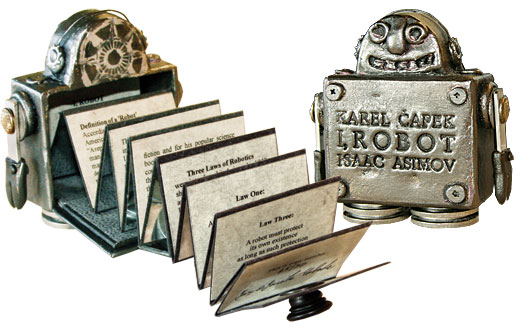 resource: J. & J. Book Arts Studio
resource: J. & J. Book Arts Studio
